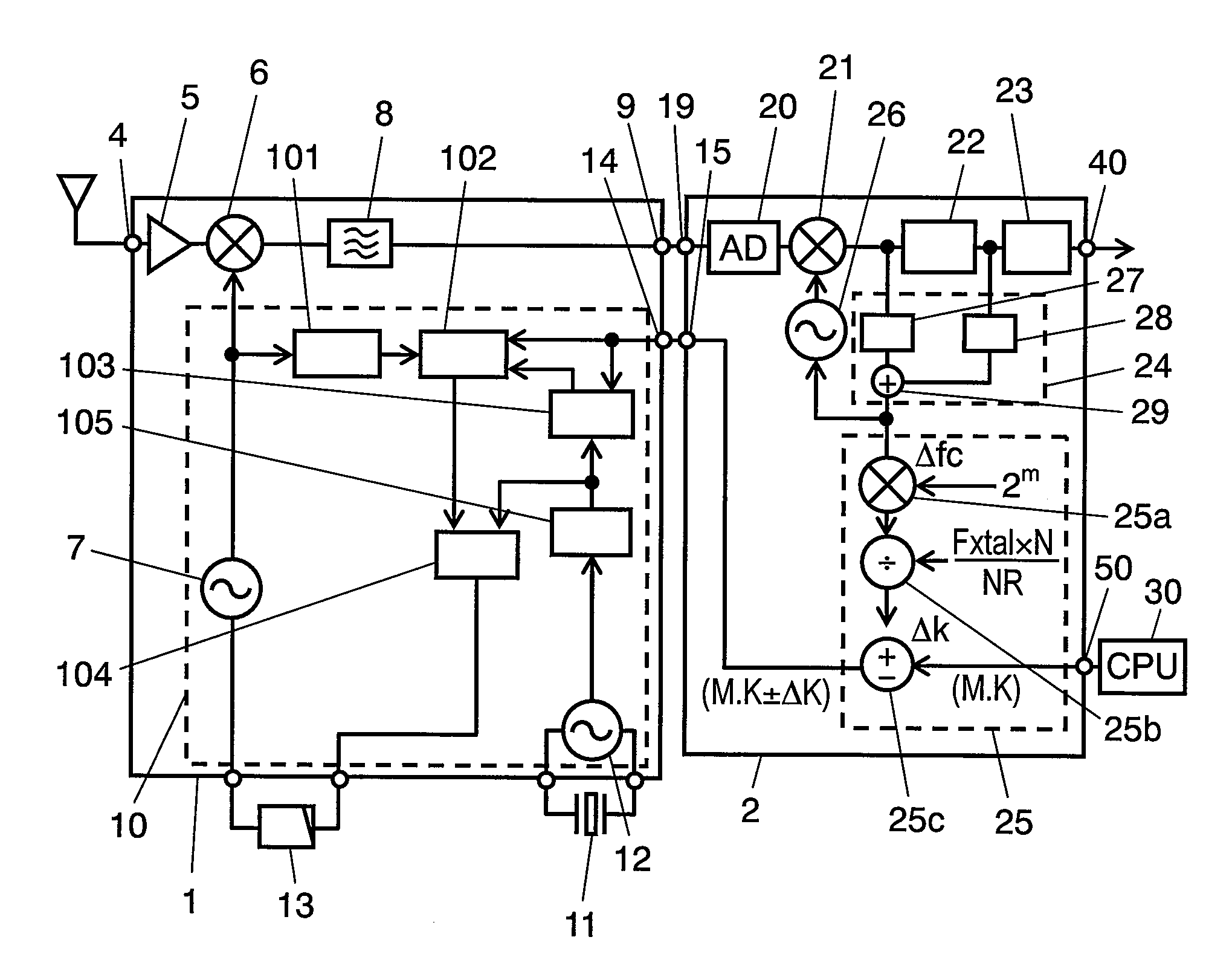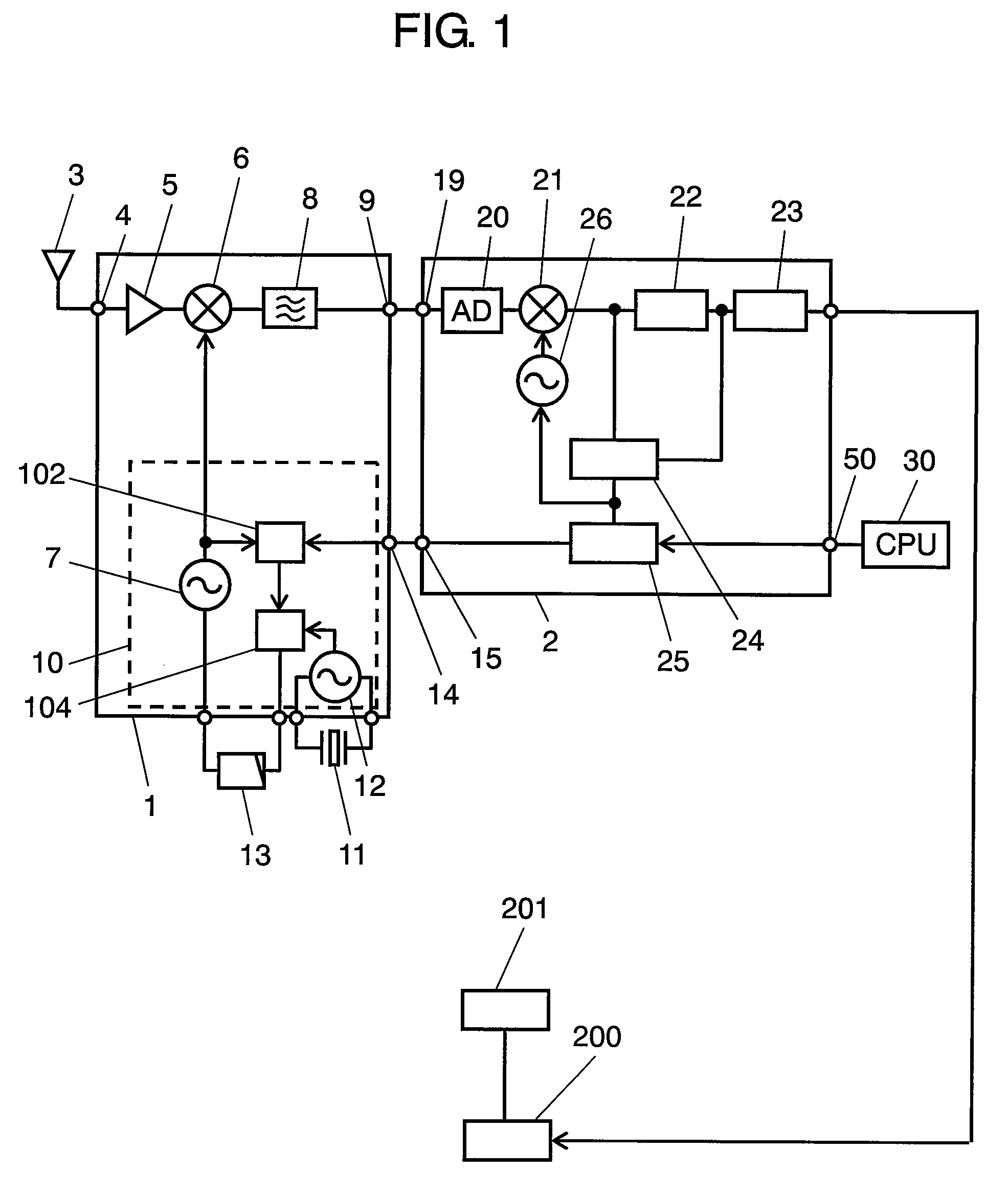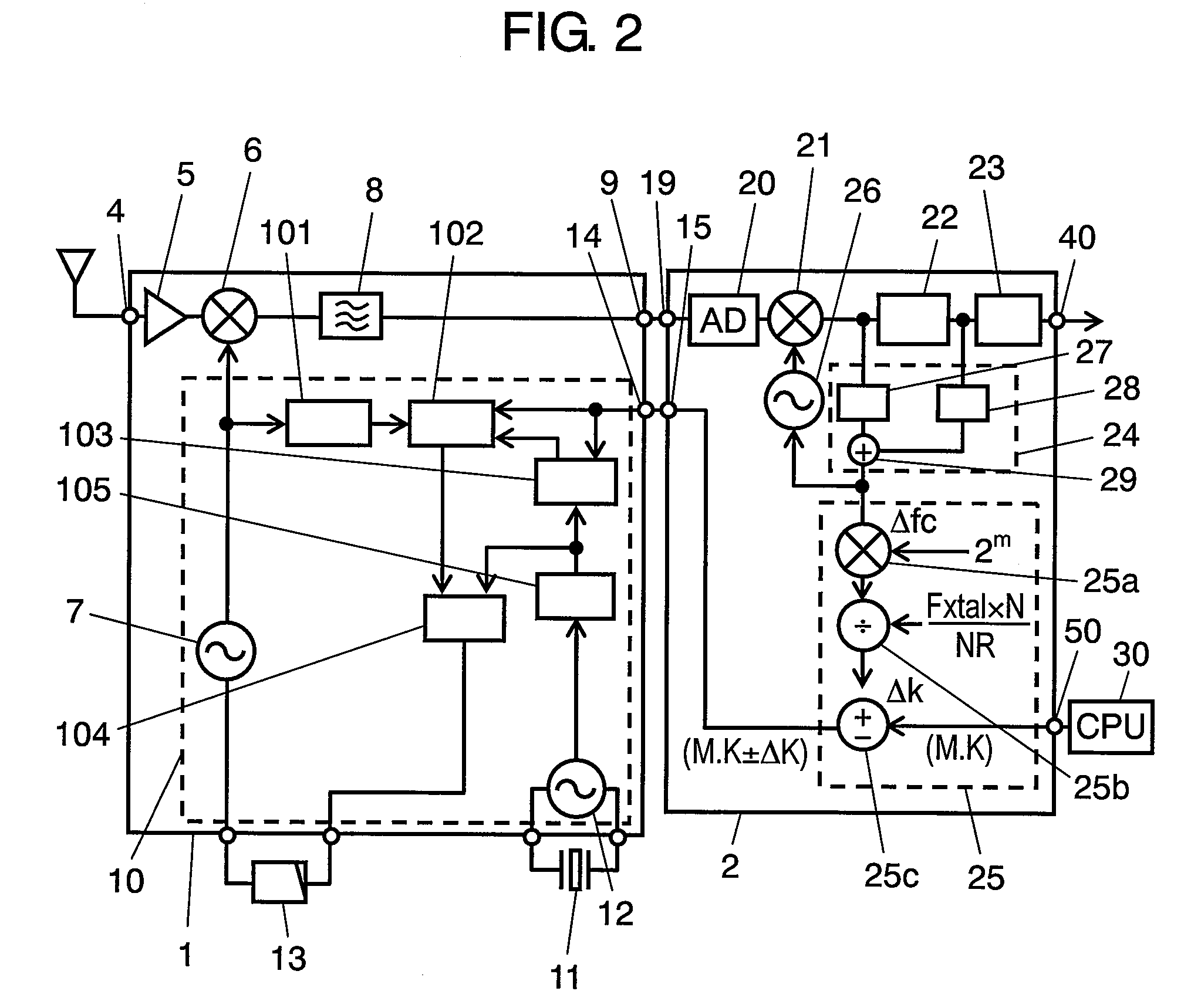Receiver and electronic apparatus
a technology of electronic equipment and receiver, applied in the direction of digital transmission, pulse automatic control, transmission, etc., can solve the problem of large frequency error in the output frequency of local oscillation signals, and achieve the effect of reducing the frequency error in local oscillation signals, reducing the pass band width of the filter for passing only desired signals, and steepening the attenuation characteristic of the filter
- Summary
- Abstract
- Description
- Claims
- Application Information
AI Technical Summary
Benefits of technology
Problems solved by technology
Method used
Image
Examples
exemplary embodiment 1
[0082]A receiver of exemplary embodiment 1 of the present invention is described with reference to FIG. 1 and FIG. 2. FIG. 1 is a block diagram of a receiver and an electronic apparatus using it in accordance with exemplary embodiment 1 of the present invention. FIG. 2 is a detailed block diagram of the receiver. The present embodiment describes a case where the receiver receives terrestrial digital broadcasting signals.
[0083]In FIG. 1, the receiver has the following elements:[0084]input terminal 4;[0085]receiving unit 1 connected to input terminal 4;[0086]demodulating unit 2 connected to the output side of receiving unit 1; and[0087]output terminal 40 connected to the output side of demodulating unit 2.
The receiver also has CPU connection terminal 50 for inputting data of CPU 30 for controlling them. An electronic apparatus including the receiver has signal processing unit 200 connected to output terminal 40, and display unit 201 connected to the signal processing unit.
[0088]Receiv...
exemplary embodiment 2
[0178]Exemplary embodiment 2 of the present invention will be described with reference to FIG. 3, FIG. 4A, and FIG. 4B. Unless otherwise noted, exemplary embodiment 2 is similar to embodiment 1.
[0179]The receiver of embodiment 2 employs variable band limiting filter 208 capable of varying the pass band range instead of band limiting filter 8 of embodiment 1.
[0180]FIG. 3 is a block diagram of a receiver in accordance with exemplary embodiment 2 of the present invention. In receiving unit 1 of the receiver of embodiment 2, radio-frequency amplifier 5, mixer 6, and variable band limiting filter 208 for passing IF signals are interconnected in that order and in the direction from input terminal 4 to demodulating unit 2, as shown in FIG. 3. A control signal for controlling the pass band range is fed from data input terminal 14 into variable band limiting filter 208. Data input terminal 14 is connected to CPU 30 via data output terminal 15 and frequency controller 25. Frequency controller...
exemplary embodiment 3
[0190]Exemplary embodiment 3 of the present invention will be described with reference to FIG. 5 and FIG. 6. Unless otherwise noted, exemplary embodiment 3 is similar to embodiment 1.
[0191]Embodiment 3 differs from embodiment 1 in the configuration of frequency error detector 24 and frequency controller 25 in demodulating unit 2. Detection of frequency error Δfc in IF signals or calculation of frequency correction value ΔK based on the frequency error is not always performed.
[0192]FIG. 5 is a block diagram of a receiver in accordance with exemplary embodiment 3 of the present invention. In FIG. 5, demodulating unit 2 of the receiver has memory 60 for primarily storing data between divider 25b and adder-subtracter 25c, derives correction value ΔK of PLL 10 based on the frequency error in the IF signals with frequency controller 25, and primarily stores correction value ΔK in memory 60.
[0193]Operations of the receiver of the present embodiment are described hereinafter in detail.
[0194...
PUM
 Login to View More
Login to View More Abstract
Description
Claims
Application Information
 Login to View More
Login to View More - R&D
- Intellectual Property
- Life Sciences
- Materials
- Tech Scout
- Unparalleled Data Quality
- Higher Quality Content
- 60% Fewer Hallucinations
Browse by: Latest US Patents, China's latest patents, Technical Efficacy Thesaurus, Application Domain, Technology Topic, Popular Technical Reports.
© 2025 PatSnap. All rights reserved.Legal|Privacy policy|Modern Slavery Act Transparency Statement|Sitemap|About US| Contact US: help@patsnap.com



